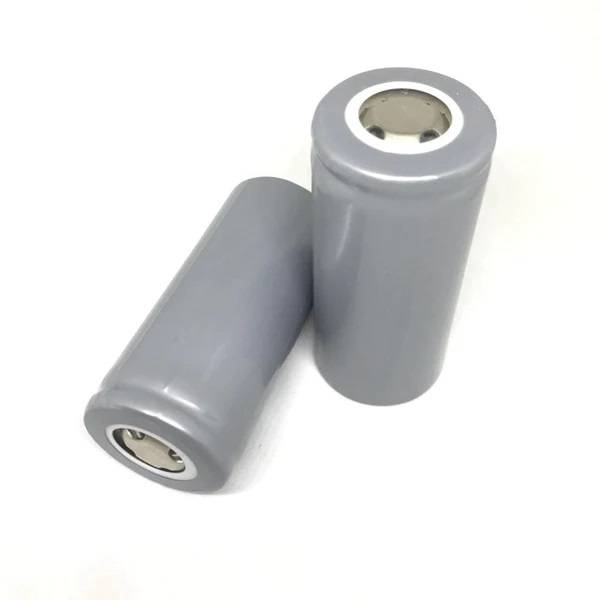Solid-state batteries are poised to revolutionize energy storage, offering enhanced safety, higher energy density, and longer lifespans compared to traditional lithium-ion batteries. As the demand for efficient and reliable energy solutions grows, solid-state technology represents a significant advancement in battery design and functionality.
What Are Solid-State Batteries and Their Mechanisms?
Solid-state batteries utilize a solid electrolyte instead of the liquid or gel electrolytes found in conventional batteries. This fundamental difference allows for several key mechanisms:
- Ion Movement: Ions move between the anode and cathode through the solid electrolyte during charge and discharge cycles.
- Material Composition: Common materials used include ceramics or polymers, which provide stability and conductivity.
- Structure: The solid structure enhances energy density by allowing more compact designs.
Mechanism Chart: Components of Solid-State Batteries
| Component | Description |
|---|---|
| Anode | Typically made from lithium or graphite |
| Cathode | Often composed of lithium metal oxides |
| Electrolyte | A solid material (ceramic or polymer) that conducts ions |
Why Are Solid-State Batteries Viewed as Safer Alternatives?
Solid-state batteries are considered safer than traditional batteries for several reasons:
- Reduced Flammability: The absence of liquid electrolytes minimizes fire risks.
- Stability at High Temperatures: Solid electrolytes can withstand higher temperatures without degrading.
- Structural Integrity: The solid form is less prone to leaks or ruptures compared to liquid systems.
These safety features make solid-state batteries particularly appealing for applications in electric vehicles and consumer electronics.
What Benefits Do Solid-State Batteries Provide Compared to Lithium-Ion Batteries?
Solid-state batteries offer numerous advantages over lithium-ion batteries:
- Higher Energy Density: They can store more energy in a smaller volume, enhancing performance.
- Longer Lifespan: With fewer degradation issues, they typically last longer than lithium-ion counterparts.
- Faster Charging Times: The design allows for quicker charging without compromising safety.
These benefits position solid-state batteries as a leading choice for future energy storage solutions.
Benefits Comparison Chart: Solid-State vs. Lithium-Ion
| Feature | Solid-State Batteries | Lithium-Ion Batteries |
|---|---|---|
| Energy Density | Higher (300-500 Wh/kg) | Lower (150-250 Wh/kg) |
| Lifespan | Longer (2000+ cycles) | Shorter (500-1500 cycles) |
| Charging Time | Faster | Moderate |
| Safety | Higher | Moderate |
How Is the Market for Solid-State Batteries Projected to Evolve?
The market for solid-state batteries is expected to grow significantly due to:
- Increasing Demand for Electric Vehicles: Automakers are investing heavily in solid-state technology to enhance EV performance.
- Government Incentives: Policies promoting clean energy solutions are driving research and development.
- Technological Advancements: Continuous improvements in materials and manufacturing processes are making production more viable.
Market analysts project that the solid-state battery market will expand rapidly over the next decade.
What Challenges Need to Be Addressed for Broad Acceptance of Solid-State Batteries?
Despite their potential, several challenges hinder the widespread adoption of solid-state batteries:
- High Production Costs: Manufacturing processes are currently more expensive than traditional battery production.
- Material Limitations: Finding suitable materials that balance conductivity, stability, and cost is critical.
- Scalability Issues: Developing scalable production techniques remains a significant hurdle.
Addressing these challenges is essential for integrating solid-state technology into mainstream applications.
How Are Innovations Driving the Future of Solid-State Battery Technology?
Innovations in solid-state battery technology are being driven by various factors:
- Research Collaborations: Partnerships between universities and industry leaders are accelerating advancements.
- New Material Discoveries: Ongoing research into alternative materials is enhancing performance characteristics.
- Pilot Projects: Companies are conducting trials to test solid-state batteries in real-world applications, refining their designs based on feedback.
These innovations will play a crucial role in shaping the future landscape of energy storage solutions.
Industrial News
Recent developments highlight significant progress in solid-state battery technology as companies like Toyota and QuantumScape announce breakthroughs in energy density and safety features. With increased investments from major automakers, the market is set to expand rapidly, driven by rising demand for electric vehicles and renewable energy storage solutions. Regulatory frameworks are also evolving to support this transition towards safer and more efficient battery technologies.
Redway Expert Insights
“Solid-state batteries represent a transformative leap forward in energy storage technology,” states Dr. Emily Carter, an expert in battery research. “Their ability to enhance safety while providing superior performance makes them essential for the future of electric mobility and renewable energy integration.”
FAQ Section
Q1: What is a solid-state battery?
A1: A solid-state battery uses a solid electrolyte instead of liquid or gel electrolytes, enhancing safety and energy density while reducing fire risks.Q2: Why are solid-state batteries considered safer?
A2: They eliminate flammable liquid electrolytes, provide stability at high temperatures, and have lower risks of leaks or ruptures compared to traditional batteries.Q3: What challenges do solid-state batteries face?
A3: Key challenges include high production costs, material limitations, and scalability issues that need addressing for widespread adoption.



